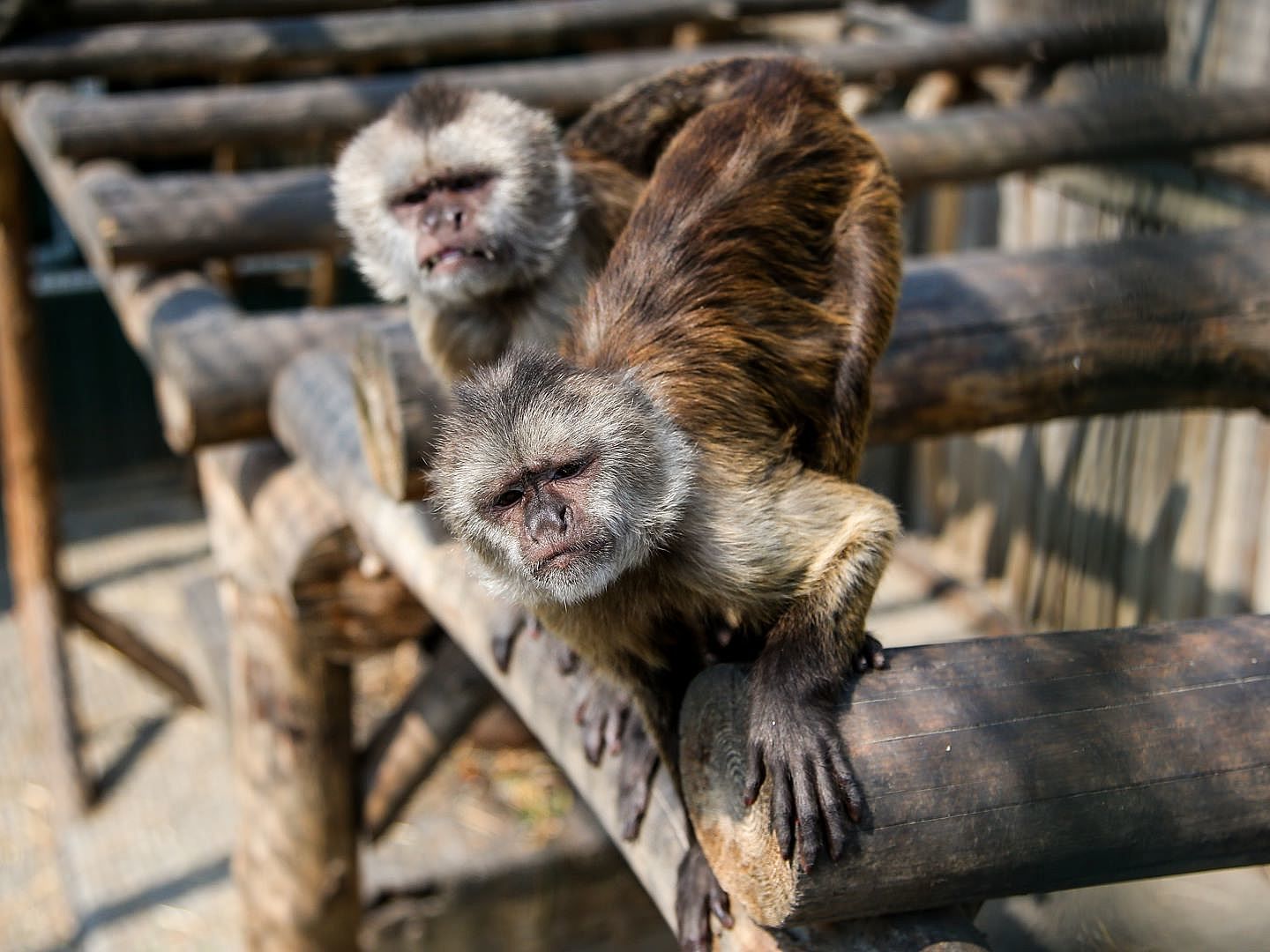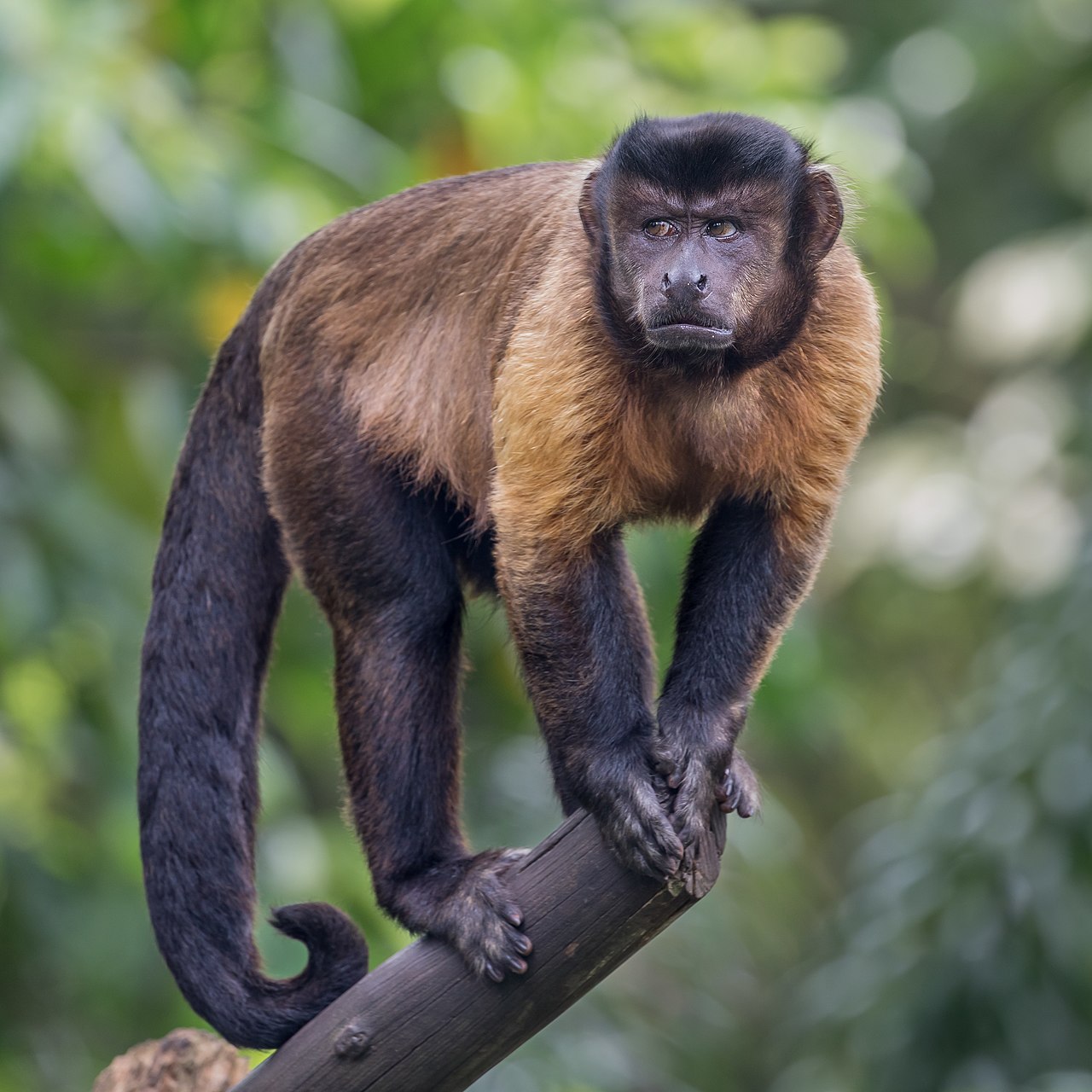You may not be familiar with the word capuchin but you definitely are familiar with the little creature that possesses that name. You see them in TV shows, movies, commercials and even in real life. If you visit the Zoo in Georgetown, you will find some of the most energetic little capuchins. An interesting fact about them is that they rub millipedes against their fur as a mosquito repellent and they rub urine on their hands and feet in order to attract mates and reduce stress. Read on to find out more about these remarkable critters.
Scientific Classification Of The Capuchin
Capuchin – Cebus & Sapajus [Scientific name]
- Kingdom: Animalia
- Phylum: Chordata
- Class: Mammalia
- Order: Primates
- Suborder: Haplorhini
- Infraorder: Simiiformes
- Family: Cebidae
- Subfamily: Cebinae
- Genera: Cebus & Sapajus
Two species of capuchins found in Guyana are: 1 Wedge-capped capuchin or weeper capuchin (Cebus olivaceus – Scientific name). 2/ Tufted capuchin (Sapajus apella – Scientific name), also known as brown capuchin, black-capped capuchin, or pin monkey.
The Wedge-capped Capuchin Features & Family

Wedge-capped Capuchin | Source: http://azovzoo.com/
Adult wedge-capped capuchins weight approximately 3 kg, but weight varies moderately with sex. They receive their name from a black triangle of dark fur centered on their foreheads. Generally, this species is light brown to brown with yellow and gray tinges on varying parts of their bodies. Their “wedge cap” starts between the eyes and extends backwards to cover the top of the head. Their faces are hairless and surrounded by light brown or blonde fur.
The wedge-capped capuchin is a polygamous species that lives in groups anywhere from 5-30 individuals, with a female biased sex ratio. The group is organized according to a pre-determined hierarchal system of dominance for both males and females. Although biological lineage is less of a factor of dominance for males than it is for females, due to male migration between groups. Wedge-capped capuchin partake in several behavioral mechanisms to assert and maintain dominance within the group including: infanticide, when an infant is deliberately killed; grooming, used to facilitate social rapport; and alloparenting, which is when members of the group care for offspring that are not their own.
The Wedge-capped Capuchin Habitat & Diet
This species of capuchin is found in northern Brazil, Guyana, French Guiana, Suriname, Venezuela and possibly northern Colombia. The genus Cebus is divided into several different species. Cebus olivaceus is known to dwell in tall, primary forest and travel over long distances during the day.
These primates are medium-sized monkeys with distinctive “wedge cap” markings on their head and slightly longer limbs than other capuchins for jumping through the forest canopy. Similar to other capuchin monkeys, the diet of wedge-capped capuchin primarily consists of fruits, invertebrates, other plant parts, and on rare occasions small vertebrates. They have also been known to rub millipedes against their fur, especially in the rainy seasons, as a potential means of mosquito repellent.
Did You Know? Food washing has been observed in non-human primates including macaques and capuchins. The primates will sometimes wash their sandy fruits and foods prior to eating them. This act has been described as an example of protoculture. Wedge-capped capuchins were shown to wash sandy food in four spontaneous occasions in both captive and wild populations.
Tufted Capuchin Features & Family

Tufted Capuchin | By Basile Morin – Own work, CC BY-SA 4.0, https://commons.wikimedia.org/w/index.php?curid=74555820
The tufted capuchin is more powerfully built than the other capuchins, with rougher fur and a long, thick tail. It has a bundle of long, hardened hair on the forehead that can be raised as a sort of “wig”. The fur is brownish gray, with the belly being somewhat lighter-colored than the rest of the body. The hands and feet are black. The tail is prehensile: strong and can be used for grasping, as an extra limb. The tufted capuchin has a head-body length of 32 to 57 centimetres (13 to 22 in), a tail length of 38 to 56 centimetres (15 to 22 in), and a weight of 1.9 to 4.8 kilograms (4.2 to 10.6 lb), with the males generally being larger and heavier than the females. Like other capuchins, it is a social animal, forming groups of 8 to 15 individuals that are led by an alpha or dominant male.
Tufted Capuchin Habitat & Diet
The tufted capuchin is an omnivorous animal, mostly feeding on fruits and invertebrates, although it sometimes feeds on small vertebrates (e.g. lizards and bird chicks) and other plant parts. It can be found in many different kinds of environment, including moist tropical and subtropical forest, dry forest, and disturbed or secondary forest.
This species lives in the northern Amazon rainforest of the Guyanas, Venezuela and Brazil and to the west of the Rio Negro, as far north as the Orinoco in Venezuela. It is also found in eastern Colombia, Ecuador, Bolivia, Peru, including the upper Andean Magdalena valley in Colombia. An introduced breeding population is well established in the northwestern peninsula of the island of Trinidad in the Republic of Trinidad and Tobago. It can be found in a large variety of forest types, mainly in tropical rainforests (up till a height of 2700 m), but also in more open forests.
Tip: The tufted capuchin rubs urine on its hands and feet in order to attract mates and reduce stress. Also, the tufted capuchin has been observed using containers to hold water, using sticks (to dig nuts, to dip for syrup, to catch ants, to reach food), using sponges to absorb juice, using stones as hammer and chisel to penetrate a barrier and anvil to crack nuts.
Wedge-capped And Tufted Capuchins Found In Guyana
Two species of capuchin are found in Guyana: the wedge-capped and the tufted. Both have unique abilities and features that make them ever so captivating. The wedge-capped is light brown to brown with yellow and gray tinges on varying parts of their bodies. Their “wedge cap” starts between the eyes and extends backwards to cover the top of the head. Their faces are hairless and surrounded by light brown or blonde fur. As for the tufted capuchin, it has a bundle of long, hardened hair on the forehead that can be raised as a sort of “wig”. The fur is brownish gray, with the belly being somewhat lighter-colored than the rest of the body. The hands and feet are black and the tail is prehensile. We are privileged to have these monkeys in Guyana.
Article References:
- https://en.wikipedia.org/wiki/Capuchin_monkey
- https://en.wikipedia.org/wiki/Wedge-capped_capuchin
- https://en.wikipedia.org/wiki/Tufted_capuchin






